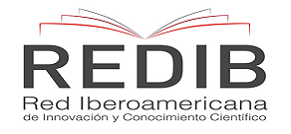Didactic strategies for the inclusion of students with moderate intellectual disabilities in the physical education class
Keywords:
Inclusion, Disability, Teachers, Physical Education, StrategiesAbstract
The inclusion of students with intellectual disabilities has been a long and complex process in the Ecuadorian educational system, particularly in physical education classes, where cognitive, motor, and affective activities are carried out to foster the optimal development of capacities and potentialities. This study aimed to analyze compliance with didactic strategies for the inclusion of students with moderate intellectual disabilities in physical education classes. The study had a mixed approach and a cross-sectional design, based on the empirical-analytical method and supported by the Delphy method. The sample consisted of 12 physical education teachers. The results suggested that the inclusion of students with moderate intellectual disabilities was an excellent option; furthermore, 55% indicated that the learning achieved to date was good because the strategies applied were correct. Finally, researchers, teachers, and directors of educational institutions were encouraged to initiate inclusion processes in favor of a fairer society.
Downloads
References
Alonzo Indarte, D. C., & Aguilar Morocho, E. K. (2020). Estrategia metodológica inclusiva para niños con síndrome de asperger en las clases de educación física estrategia. Cognosis, 5(1), 19-32.
Asociación Estadounidense de Psiquiatría. (2015). Manual Diagnóstico y Estadístico de las Trastornos Mentales. Médica Panamericana.
Bodero, L. (2018). Carencia de metodología pedagógica en la educación inclusiva del Ecuador. Revista Espirales, 2(16), 112-135.
Constitución de la República del Ecuador. (2008). Art. 26. Ediciones Legales.
Crisol, E. (2019). Hacia una inclusión educativa para todos. Nuevas contribuciones. Revista de Currículum y Formación del Profesorado, 23(1), 1-9.
Flórez, J. (2018). La comprensión actual de la discapacidad intelectual. Sal Terrae, 106, 479-492.
Fonseca, S., Requeiro, R., & Valdés, A. (2020). La inclusión de estudiantes con necesidades educativas especiales vista desde el desempeño de los docentes de la educación básica ecuatoriana. Revista Universidad y Sociedad, 5, 438-444.
Gallo, M., & Naranjo, M. (2020). Efectividad de la inclusión pedagógica de los estudiantes con discapacidad intelectual en las Unidades Educativas Fiscales del circuito 06-11 de la ciudad de Latacunga. Uniandes Episteme, 8(1), 122-136.
Gómez, A., Planes, D., & Gómez, Y. (2019). Acciones metodológicas para contribuir al proceso de Educación Física Inclusiva: una aproximación al tema. Revista Mendive, 17(1), 84-96.
González, I., & Macías, D. (2018). La formación permanente como herramienta para mejorar la intervención del maestro de educación física con alumnado con discapacidad. Retos, 33, 118-122.
Ley Orgánica de Educación Intercultural. (2011). LOEI Acuerdo Ministerial. Editora Nacional.
Macías Moreira, L. S., & Bolívar Chávez, O. E. (2021). Inclusive methodological strategies in Physical Education for children with disabilities at the Simón Bolívar Educational Unit. Mikarimin. Multidisciplinary Scientific Journal, 7(2), 147–160.
Proenza, J. (2021). Educación Física inclusiva: modelo y paradigma. Revista Centífica Especializada de Ciencias de la Cultura Física y el Deporte, 18(47), 145-160.
Rello, F., Garoz, I., & Tejero, C. (2018). Análisis comparativo del efecto de tres programas de sensibilización hacia la discapacidad en Educación Física. Retos, 34, 258-252.
Reynosa, E., Serrano, E., & Ortega, A. (2019). Estrategias didácticas para investigación científica: relevancia en la formación de investigadores. Universidad y Sociedad, 12(1), 259-266.
Rubinstein, S., & Franco, V. (2020). El Campo de la Discapacidad Desde la Perspectiva de los Docentes Que Cursan la Especialización en Actividad Física Adaptada y Discapa cidad Del IUACJ. Revista Brasileira de Educação Especial, 26(1), 17-34.
Rubio, A. (2018). Cuatro estrategias didácticas basadas en arte contemporáneo: El proceso educativo como obra de arte a través de Metodologías Artísticas de Enseñanza-Aprendizaje. Revista de Investigación En Artes Visuales, 1(3), 67-79.
Santamaría, R., Ruiz, L., Puchalt, J., & Ros, C. (2016). Inclusión en las aulas de Educación Física. Estudio de casos. Sportis: Revista Técnico-Científica del Deporte Escolar, Educación Física y Psicomotricidad, 2(6), 496-514.
Ullaguari, S. (2018). La educación física inclusiva y currículo. Revista de Divulgación de Experiencias Pedagógicas MAMAKUNA, 9, 28-37.
Yépez, M. (2018). Los retos de la docencia, frente a la educación inclusiva en el Ecuador. Espirales, 2(14), 61-70.
Downloads
Published
How to Cite
Issue
Section
License
Copyright and Licensing
For all articles published in Atena Journals, copyright is retained by the authors. Articles are licensed under an open access Creative Commons CC BY 4.0 license, meaning that anyone may download and read the paper for free. In addition, the article may be reused and quoted provided that the original published version is cited. These conditions allow for maximum use and exposure of the work, while ensuring that the authors receive proper credit.
Reproducing Published Material from other Publishers
It is absolutely essential that authors obtain permission to reproduce any published material (figures, schemes, tables or any extract of a text) which does not fall into the public domain, or for which they do not hold the copyright. Permission should be requested by the authors from the copyrightholder (usually the Publisher, please refer to the imprint of the individual publications to identify the copyrightholder).
Permission is required for:
- Your own works published by other Publishers and for which you did not retain copyright.
- Substantial extracts from anyones' works or a series of works.
- Use of Tables, Graphs, Charts, Schemes and Artworks if they are unaltered or slightly modified.
- Photographs for which you do not hold copyright.
Permission is not required for:
- Reconstruction of your own table with data already published elsewhere. Please notice that in this case you must cite the source of the data in the form of either "Data from..." or "Adapted from...".
- Reasonably short quotes are considered fair use and therefore do not require permission.
- Graphs, Charts, Schemes and Artworks that are completely redrawn by the authors and significantly changed beyond recognition do not require permission.
Obtaining Permission
In order to avoid unnecessary delays in the publication process, you should start obtaining permissions as early as possible. If in any doubt about the copyright, apply for permission. Atena Journals cannot publish material from other publications without permission.
The copyright holder may give you instructions on the form of acknowledgement to be followed; otherwise follow the style: "Reproduced with permission from [author], [book/journal title]; published by [publisher], [year].' at the end of the caption of the Table, Figure or Scheme.














